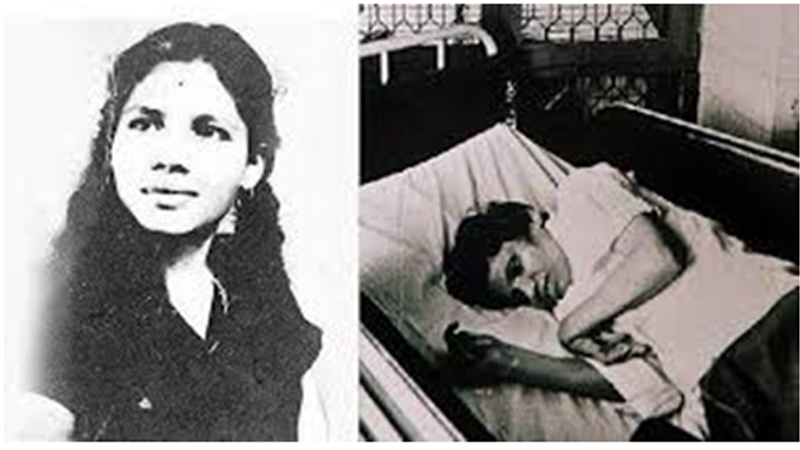

On 18th May 2015 death brought relief to Aruna Ramchnadra Shanbaug from the tortuous, vegetative life that she endured for 42 years. She was 67 years. As in her life so in her death, one of the biggest debates on euthanasia or mercy killing our country has seen, becomes pertinent.
One may recall that Aruna, lived in a Persistent Vegetative State (PVS) lying in the hospital bed of King Edward Memorial Hospital (KEM), since the attack and molestation by a ward boy from the same hospital on the evening of 27th November 1973. The attack cut off the oxygen supply to the brain resulting in brain stem contusion with associated cervical cord injury. It also left her cortically blind. Unable to bear the prolonged, high medical expenses her family abandoned her. Being in a PVS, virtually dead, she could not see, hear, express herself or communicate in any manner.
the question certainly arises whether it is right to continue the suffering of a person knowing well that there is no hope of improvement. In recent years voices have been increasing raised worldwide to support an individual’s right-to-die. Convinced that Aruna would never have wanted to live life with such indignity Pinki Virani, a writer, journalist and noted social activist had filed a writ petition in the Supreme Court of India seeking euthanasia on behalf of Aruna. The Supreme Court had turned down the petition saying “Euthanasia cannot be permitted in India and it would be against the law and medical ethics”. However, some countries like Netherlands, Canada, Belgium, Switzerland and Luxemburg have legalized physician assisted death or euthanasia.
In a poor country like ours, where meeting every human need is a struggle, medical costs are best avoided. Most of the people are still not covered under medical insurance. In such a scenario, despite all the emotions involved prolonging life of a person in PVS is certainly a huge load. Yet permitting euthanasia will involve a medico-legal- cultural dilemma.
If euthanasia is made legal it is understandable that it could be a murderous tool in the hands of the unscrupulous, but can we evolve a procedure where strict medical ethics are adhered to while setting free a life from indignity and pain of being in PVS as well as sparing the family from prolonged care and medical expenses?
